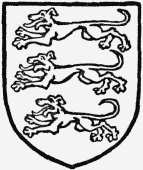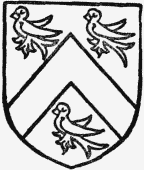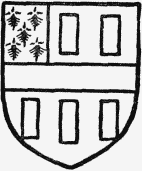A History of the County of Hertford: Volume 2. Originally published by Victoria County History, London, 1908.
This free content was digitised by double rekeying. All rights reserved.
'Parishes: Elstree', in A History of the County of Hertford: Volume 2, ed. William Page (London, 1908), British History Online https://www.british-history.ac.uk/vch/herts/vol2/pp349-351 [accessed 30 April 2025].
'Parishes: Elstree', in A History of the County of Hertford: Volume 2. Edited by William Page (London, 1908), British History Online, accessed April 30, 2025, https://www.british-history.ac.uk/vch/herts/vol2/pp349-351.
"Parishes: Elstree". A History of the County of Hertford: Volume 2. Ed. William Page (London, 1908), British History Online. Web. 30 April 2025. https://www.british-history.ac.uk/vch/herts/vol2/pp349-351.
In this section
ELSTREE
Tithufes (x cent.); Tidulvestre (xii cent.); Tydolvestre, Idulvestre, Idulfestre (xiii cent.); Idelstre, Adulvestre, (xiv cent.); Ilstrey, Elstree (xvi cent.).
Elstree, which includes the hamlet of Boreham or Barham Wood, is a small parish of 1,510 acres, bordering on Middlesex and divided from that county for three-quarters of its length by the Bushey and Barnet Road. Its western boundary follows the slight curve of the Watling Street which parts Elstree from the parish of Aldenham and brings it into connexion with London and St. Albans. It is interesting to notice in a grant of King Offa of 795 that the land of Aldenham extended to the Elstree Woods at that time. (fn. 1)
The greater part of Elstree parish is a slightly undulating plain, but in the south the land rises steeply to some 480 ft. above ordnance datum. The village is on a hill in the extreme south-west at the crossing of Watling Street and the southern highway, and it spreads into the neighbouring parishes of Aldenham, Little Stanmore, and Edgware. Its chief street is part of the Watling Street along which it extends for nearly half-a-mile. The church is in the north of the village near the High Street and the houses stand close up to the narrow street. There is a fine red-brick Jacobean house near the church called Schopwick, which belongs to the trustees of Lieut.-Colonel Bruce, and is the residence of Mr. Kershaw. In the south of the village just off the high road is Elstree Hill House, a red-brick building, the older part of which is of the reign of Queen Anne. It is the residence of the Rev. F. de Winton Lushington, head master of the preparatory school, which became well known under the Rev. L. Sanderson, the principal, from 1869 to 1903. Many famous men have been educated here. The school buildings and large grounds adjoin the house.
A little south of the Barnet road is a large redbrick gabled house called Penniwells standing in large grounds, owned by Mr. F. Marment. Other houses along this road are Abbotsbury, a modern red-brick house, owned by Mrs. de Putron, the Chantry, owned by Mr. A. Brampton, and Elstree Lodge, the property of Mr. L. Staples, and tenanted by Lieut.-Colonel G. A. Draffen. On the south, near where a road made in 1881 branches off to the station, is a large stucco house called Deacon's Hill House. It used to be the home of the Phillimore family, but is now the property of Mrs. J. E. Warton, and on the opposite side of the Barnet road is Deacon's Court, the property of Mrs. Miller.
A little south-east of the village is a seventeenth-century house called the Fortune, so named from an ornamented ceiling in one of the lower rooms on which the Wheel of Fortune is thought to be represented in the plaster. The Fortune is the property of Mrs. Sanderson, widow of the Rev. L. Sanderson. Near this house is an old well called 'Penny Well.' 'No heart can think, no tongue can tell, what lies 'tween Brockly Hill and Penny Well.' The story goes that travellers on Watling Street would drink there and leave a penny for the draught.
North-east of the church near Allum Lane is a white house now called Radnor Hall, but for the past 200 years known as Palmers. It is the property of Mr. D. Maclennan. Near it is Palmers Lodge, a white brick and tiled house, the property of Mr. G. W. Atkins.
The Midland Railway main line runs through the parish from north to south, and in the centre of the parish is a station called Elstree and Boreham Wood, about which the hamlet of Boreham has sprung up within the last twenty-five years. It is growing rapidly and possesses a photo-paper and other factories and engineering works. The houses are mostly unimportant, but near Allum Lane which leads to Elstree is Hillside, the property and residence of Mr. Andrew Chatto. Boreham village is to a great extent built on land which was formerly part of the manor estate. It was separated from the manorhouse some forty or fifty years ago. (fn. 2)
In the parish of Elstree it is noticeable that the hill roads are remarkably direct and seldom curve to avoid the steep pitch, and it has been suggested that the roads were originally slides for the timber which used to be sent to London for fuel. (fn. 3) Nearly all the parish is pasture, a great deal of the land being laid down in grass of late years. In 1905 there were only 40½ acres of arable land, while there were 1,272 acres permanent grass and no woods. (fn. 4)
Sir Richard Burton, the well-known traveller, was born at Torquay on 19 March, 1821, and was christened at Elstree Church from Boreham House, now Hillside, on 2 September. (fn. 5)
An Act was passed for inclosing the common of Boreham Wood in 1776, and in 1781 commissioners were appointed to carry out the same. (fn. 6)
MANOR
In 1188 Pope Clement granted to the kitchen of the monastery the whole land of ELSTREE. He also gave to the Abbey the wood of Boreham for the feeding of the swine. (fn. 7) The monastery kept the manor until the Dissolution, (fn. 8) and it was doubtless included in a large grant of land to Sir Anthony Denny in 1542, who died seised of it in 1550. (fn. 9) Sir Anthony held a high position at court, being one of the Gentlemen of the Privy Chamber and Groom of the Stole. He married Joan, daughter of Sir Philip Champernoune of Devon, (fn. 10) by whom he had a son Henry, who succeeded his father in the property. In 1574 Henry Denny leased Boreham Wood to Edmund Downing for sixty years, and died the same year, leaving directions in his will that his executors should take all his lands in Hert-fordshire for fourteen years for paying off his debts and for the 'advancement' of his younger children. (fn. 11) His son and heir Robert, a minor at his father's death, died two years later, and the estate passed to the next son Edward. In 1589 this Edward was high sheriff of the county, and in 1603 had the honour of knighthood bestowed upon him, when he went with a splendid retinue of 140 men to meet King James on his way to claim the English crown. (fn. 12) Sir Edward was summoned to Parliament in 1604 as Lord Denny de Waltham, and in 1626 was created earl of Norwich. (fn. 13) After retaining the property for some thirty years Sir Edward sold the whole manor, but not the site, to Robert Briscoe of Aldenham. With this he sold also the Fryth Farms and another farm called Fryth House at 'Smugoakegreene.' (fn. 14) A few months later in the same year, 1607, Robert Briscoe sold that part of Park which was in St. Stephen's and St. Peter's to Sir Baptist Hicks, knt., and William Toperly, mercer, for Sir Baptist and his heirs for ever. (fn. 15) But that part of Park which lay in Elstree he kept and bequeathed to Edward his nephew, who inherited it at his uncle's death in 1616. (fn. 16)

Briscoe. Argent three running greyhounds sable.
Edward Briscoe held this property (fn. 17) till his death some twenty-two years later, and was succeeded by his son Edward, (fn. 18) who in 1670 conveyed the manor to his son George. (fn. 19)
In 1702 the property was still in the family of the Briscoes. (fn. 20) From them it passed to Edward Beauchamp, whose son Ephraim succeeded him. Ephraim's son William predeceased his father, who died in 1728, when the estate passed to his grandson William who was created a baronet in 1744. Later he added his mother's maiden name of Proctor to his own in compliance with the will of his uncle George Proctor. (fn. 21)

Proctor. Argent a cheveron sable between three martlets gules.

Beauchamp. Gules a fesse between six billets or set barwise with a quarter ermine.
Sir William Beauchamp-Proctor was owner in 1745 and 1747, (fn. 22) but in 1768 the manor had passed into the hands of Thomas Jemmit (fn. 23) who was holding up to 1774, (fn. 24) in which year he made a settlement of the property.
Cussans says that in 1774 the manor was conveyed to George Byng, of Wrotham Park, Middlesex, and that in 1789 his son George sold it to William Robert Phillimore, on whose death in 1846 it came to his son Captain William Brough Phillimore. (fn. 25) It is now owned by Mr. R. C. Phillimore, but nearly the whole of the manor is now enfranchised. (fn. 26)
The walls of the old manor-house, pulled down c. 1880, were built into the present fine modern redbrick house which is a little north-west of Boreham station. It is now the property of Mrs. Barstow, of 'The Cottage,' Shenley, and was tenanted by the late Hon. Henry Lloyd Gibbs. Several chimney-pieces from the manor-house are now in Aldenham House; one bears the date 1859, but this is a modern addition, the chimney-piece being of seventeenth-century date. There used to be a considerable amount of land belonging to the manor-house some forty or fifty years ago, but when the Midland Railway was made through Elstree most of this land was sold, and is now built over. (fn. 27)
About 1202 the abbot granted to Gilbert de Hendune feeding for thirty hogs in the wood of Boreham. (fn. 28) The rent for this privilege was two Norwegian goshawks, (fn. 29) and that for a piece of land in Elstree was a pair of white gloves. (fn. 30) Early in this same century Elstree bore a heavy share of the expenses incurred by the abbey manors in entertaining King John, Fawkes de Breauté, and the French Marshal. (fn. 31)
About 1275, the abbot appropriated for his own use a park in Boreham Wood, and laid claim to free warren there, but by what right was not known. (fn. 32)
One of the services due to the monastery was a supply of horses for the abbot's yearly visit to the cell of St. Mary at Tynemouth, and one tenement at Elstree was answerable for a horse for this purpose. (fn. 33)
CHURCH
The church of ST. NICHOLAS is almost entirely modern, and has a chancel with south chapel and north vestry, a nave of five bays with north and south aisles and a south-west tower with a shingled spire. The only old work is in the south arcade of the nave, which was rebuilt in 1853 on the old foundations and with the old materials, and in the south wall of the south aisle. In the nave roof three trusses of the former fifteenth-century roof are preserved, plain work with arched braces and collars, the rest being copied from them. The south doorway of the nave with a four-centred arch under a square head, and a rose and a shield bearing a saltire in the spandrels, is said to be old work, but is more probably a nineteenth-century reproduction of a former doorway. Plans and elevations of the church preserved in the library of the Society of Antiquaries show that in the early part of last century it consisted of nave, chancel, and south aisle, the chancel having a late fifteenth-century square-headed east window of three lights, and on the south side of the nave roof was a small dormer window in the position of a rood window. The bells were in a wooden turret at the west end. The chancel screen existed till 1824, when it was taken down. The font, at the west end of the north aisle, is of the fifteenth-century, octagonal with a panelled bowl and a slender, panelled stem surrounded by an arcade of open arches. The detail is good but obscured by paint, and a modern block of stone has been inserted between the old bowl and stem. (fn. 34)
In the tower are six bells by Warner of Cripplegate, five of 1875, and one added later.
Many of the monuments in the church were taken down and fixed in the tower in 1853, but the most interesting was broken in the process and has only lately been pieced together and set up once more in the church by the care of the rector, the Rev. A. R. T. Eales. It is in the north aisle, and is of alabaster with a long English metrical inscription to Olive Buck.
The plate is modern and consists of a silver cup, flagon and paten of 1844, given in 1851, a second cup and two patens of 1852, given in 1853, and a fine silver-gilt chalice given in 1906.
The earliest register begins in 1655 and ends in 1757, with a gap from 1744 to 1753. It has a titlepage in red and black ink, recording that it was 'bought for a register by Maister Fly of Richard Williams, Stationer of St. Albans, which said Mr. Fly beinge Minister of Elsterie bestowes this Booke on his Parish—it cost twentye shillinges, &c.' It contains the record of several briefs, beginning in 1659. The second book goes from 1758 to 1812. There are also preserved churchwardens' accounts from 1715 to 1744, and from 1742 to 1842, and a book of vestry minutes 1769–1823.
ADVOWSON
In 1188 there was a chapel at Elstree the profits from which were appropriated to the use of the abbey by the permission of Pope Clement in that year. (fn. 35) This chapelry became a parish before 1424. (fn. 36)
The rectory of Elstree belonged to the abbey of St. Albans till the Dissolution, and afterwards came to the crown, (fn. 37) and has apparently remained in the hands of the crown since, (fn. 38) the presentation being with the Lord Chancellor. (fn. 39)
In the thirteenth century there appears to have been another chapel in Elstree, for in 1248 Henry III confirmed an earlier charter by which the chapel of St. Bartholomew, Elstree, was granted by Robert de Ramis to the prior and convent of St. Bartholomew's, Smithfield. (fn. 40) It seems that there was a tenement in Elstree called Chappell House, which was held in 1637 by Edward Briscoe. (fn. 41)
In 1792 an order was passed by the vestry that 10s. 6d. should be allowed to the churchwardens for the use of the psalm-singers. (fn. 42) In 1803 a meeting was held in the parish church to discuss the Acts of Parliament recently passed for the defence of the kingdom. (fn. 43)
In 1669 the house of Mr. Richard Haly was used for a conventicle, the preachers there being Isaac Loaffes, a nonconforming minister, and Jeremiah White, chaplain to Cromwell, and preacher to the Council of State. (fn. 44) In 1760 a house at Boreham Wood was certificated for Independents, who still have a chapel here. (fn. 45) There is now also a Baptist chapel.
CHARITIES
In 1616 Robert Briscoe, by deed, charged 6 acres of land called Church Mead with an annual payment of £3, of which £2 was to be given to the poor, and £1 towards the repair of the parish church. The rent-charge is paid by Mr. D. Maclennan, the owner of the property charged.
In 1726 Samuel Nicholl, by deed, made provision for the payment of certain rent-charges given by himself and others of the name of Nicoll by assuring 3 acres of land called Pen's Croft in Aldenham. Under the Inclosure Act of 16 Geo. III this land was exchanged for 6 acres in the parish of Edgware, Middlesex, known as Pasture Tree Field, which was sold in 1882 for £730 and invested in £724 11s. 3d. India 3½ per cent. stock with the official trustees.
In 1726 John Warren by will charged a field in this parish called Maggots Mead, containing 4 acres, with 40s. a year for the poor, to be distributed on the second Lord's day after Christmas.
In 1730 Robert Warren by his will proved in the P.C.C. in 1750 charged a close called Monk's Mead with 40s. to be distributed among the poor on Candlemas and All Saints' Day.
Allotment to the Poor.—Under the Inclosure Act above referred to provision was made for the continuance of an annual payment of £2 10s. for the benefit of the poor. The charge was redeemed by the transfer in 1905 to the official trustees of £120 consols.
The above-mentioned charities are administered by one body of trustees and income applied in weekly allowances and coals to widows and lone women.
The said Robert Warren by a codicil to his will also charged his field called the Home Field with £5 annually for apprenticing a poor child. The annuity is paid by Lord Aldenham. The official trustees also hold £263 12s. 6d. consols arising from investment of accumulations. By a scheme of 1896 the income is applicable (1) in apprenticing, (2) for the promotion of technical instruction.